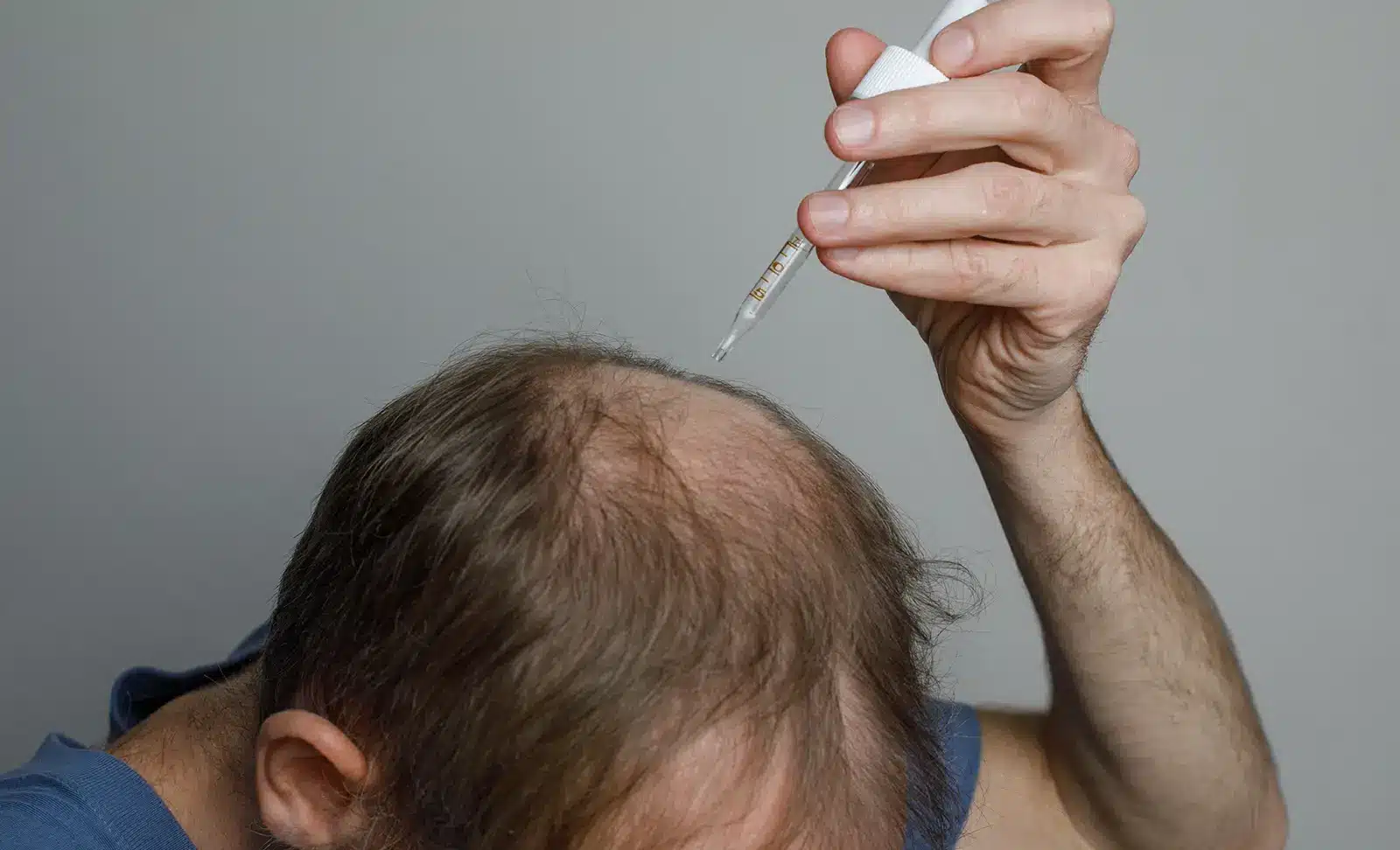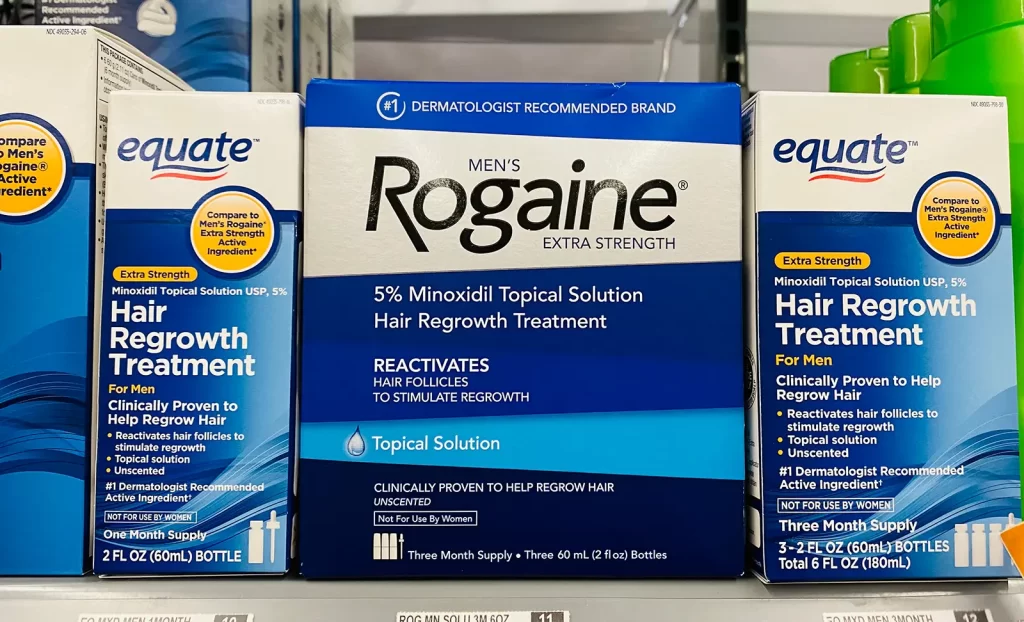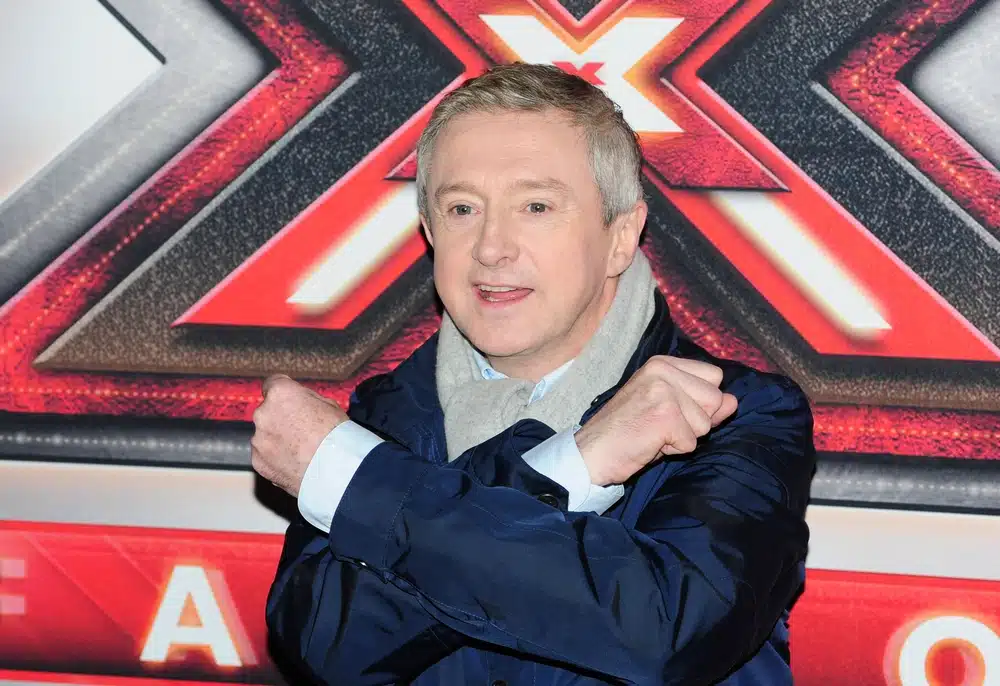If you’re a man who has experienced hair loss, the chances are you have heard about Rogaine, a popular hair loss treatment that aims to fully restore the hairline. The question is, does Rogaine for men actually work, or is it simply a waste of time, energy, and money? It’s not always easy to determine which hair restoration solutions are actually worthwhile, so this guide aims to unravel the truth behind Rogaine and its effectiveness. Keep reading to learn more.
What is Rogaine and Who is it for?
Rogaine is the brand name for a product containing minoxidil. It is an over-the-counter hair loss treatment applied topically and has various strengths, including 2% and 5% solutions.
Rogaine for men is specifically for males suffering from androgenetic alopecia, also known as male pattern baldness. This happens to many men within their lifetime, affecting around half of all men by the time they reach fifty years old. [1]
Does Rogaine for Men Actually Work?
Yes, Rogaine genuinely works, and it’s all thanks to the active ingredient minoxidil.
Minoxidil is a medication that comes in the form of a foam solution. Applying to the scalp promotes hair growth by opening the blood vessels and boosting blood flow to the hair follicles. As a result, the hair follicles receive the nutrients they need to stay in the anagen growth phase of the hair growth cycle. This leads to longer, thicker, healthier hair growing through.
The exact reason this happens is not fully understood, but there have been several studies into the effectiveness of minoxidil (and, therefore, Rogaine), proving that it does actually work. In a randomised clinical trial comparing 2% and 5% topical minoxidil to a placebo, results showed that the men taking the 5% solution showed the most hair growth compared to the 2% solution and placebo. [1] Other clinical studies have shown similar results; in another study conducted in Germany, 5% minoxidil decreased the size of the hair loss area in 62% of subjects. [2]
With minoxidil being clinically proven to improve hair coverage, it’s safe to say that Rogaine is an effective treatment for men experiencing hair loss.
How to Use Rogaine
Have you experienced hereditary hair loss and want to treat it? Here’s how to use minoxidil.
First, you must choose the product you want. Rogaine has men’s solution and men’s foam – the solution is better for precise application, whereas the foam is better for covering a larger area. You must also pick between 2% or Men Extra Strength 5%.
To use the treatment, apply directly to your scalp, specifically where you are experiencing hair loss. You may need to part your hair to get the treatment where it needs to go, and it must always be applied to dry, clean hair. You then allow it to dry before going about your day. You will need to do this twice a day.
Rogaine must be applied daily to keep up with results. As such, it’s best to incorporate applying Rogaine into your already-established routine – for example, before brushing your teeth in the morning or evening. If you only take it for a specific amount of time, start to regrow hair, and then stop using it, that will mean only a temporary increase in hair coverage.
When Will You See the Results?
Results do not show overnight – you need to give Rogaine some time for it to work. Here’s a timeline of what to expect.
1-3 Weeks: In these early stages, expect an increase in hair shedding. Do not let this put you off continuing to use Rogaine, as this is just the process of making room for the newer hairs to grow through.
2-4 Months: At this stage, you will begin noticing new hair growing through. These hairs will likely be soft, fine, and short, but if you look closely enough, they will be there. This is a clear sign Rogaine is working.
4-6 Months: You’ll notice thicker, more obvious hair regrowth after around four to six months.
6+ Months: Full results show through after six months, at which point you can enjoy the results. Keep in mind that you cannot stop using Rogaine at this point, as you must maintain the treatment for results to stick!
It’s not always easy to notice results, especially in the early weeks of using Rogaine, so monitoring growth with a hair track app is a good idea.
Potential Side Effects
Like with most medications, Rogaine comes with some potential side effects:
- Itching
- Rash
- Acne
- Burning
- Soreness
- Red Skin
- Swelling
- Hair Loss
If you experience these, discontinue using them and speak to a doctor.
There are also more specific side effects if you have taken too much Rogaine in one go, and these include blurred vision, dizziness, chest pain, and an irregular heartbeat.
Who Shouldn’t Use Rogaine?
Some people shouldn’t use Rogaine. First, anyone with a known sensitivity or allergy to minoxidil should not use this product. Anyone pregnant, under eighteen, or with a scalp condition like scalp psoriasis should also not use it.
Rogaine is specifically for androgenetic alopecia. Those with another type of hair loss, such as telogen effluvium (which usually comes on suddenly), should look at other treatment options.
Where Can You Get Rogaine?
Rogaine is very easy to get hold of, as you do not need a prescription to acquire this medication.
You can purchase Rogaine online and even set up a subscribe-and-save service to deliver it to your door each time you run out, ensuring you consistently use it. You can also find Rogaine in pharmacies and purchase it over the counter.
It should be noted that Rogaine is quite expensive, especially when purchasing routinely over time. When looking at the cost of Rogaine from Boots, a 3-month supply of the 5% solution costs £69.99 when not on sale. That would be equal to nearly £280 per year.
Can You Use Rogaine on the Beard Area?
Rogaine is specifically formulated to treat hair loss on the scalp, and will likely not be as effective at regrowing the beard. The brand Rogaine does not include instructions for the beard, so it’s best to avoid applying it to this area of the face – instead, look at other beard restoration options.
Can Women Use Rogaine?
Yes – both men and women can use Rogaine. As well as Rogaine for men, the brand also sells Rogaine for women, which works in the same way for female scalps and is specifically for women experiencing androgenetic alopecia, or female pattern baldness.
Some other hair restoration medications are for men only because they work by impacting hormones, including Finasteride and Dutasteride.
What if Rogaine Doesn’t Work for You?
What if Rogaine doesn’t work for you? What if you do not like the idea of applying a topical medication twice a day for the rest of your life? There are other hair restoration options out there that could help you.
Finasteride or Dutasteride: If you are looking for an alternative medication for men, Finasteride and Dutasteride are options. Both medications affect male hormones, specifically reducing the production of DHT, the hormone responsible for male hair loss. As such, taking them often leads to new hair growth. Often, individuals use a mixture of Finasteride/Dutasteride and Minoxidil to maximise results, which is worth considering.
Low-Level Laser Therapy: Low-level laser therapy is a treatment that involves applying laser therapy to the scalp to boost growth. It does this by stimulating blood flow and reducing inflammation, creating an environment more conducive to hair growth.
PRP Injections: PRP (platelet-rich plasma) injections are a clinical treatment involving using a patient’s blood to boost hair growth. The growth factors within the patient’s platelets help accelerate healing.
Hair Transplant: The most effective solution for hair loss is a hair transplant. This surgery is minimally invasive, with a surgeon making tiny incisions in the scalp to transplant healthy hair follicles from one area to another. It takes around six months for results to show through, but the results last a lifetime, and patients do not need to worry about keeping up with a topical medication.
So, if Rogaine does not work for you, any of the above options are worth trying.
Rogaine for Men: In Summary
Rogaine is a topical solution that uses the active ingredient minoxidil to boost blood flow to the scalp and increase hair growth. Several clinical studies have shown Rogaine’s effectiveness, and it has already helped many men regrow their hair and feel confident once more.
However, Rogaine is not a 100% effective solution – while it does work amazingly for some, not everyone experiences the same results. If Rogaine doesn’t work as well as you’d hoped, the Harley Street Hair Clinic team is here to help. Get in touch today or check out our patients gallery to see what our hair restoration solution can do.
Sources:
- https://www.ncbi.nlm.nih.gov/books/NBK278957/#:~:text=Male%20androgenetic%20alopecia%20(MAA)%20is,of%20men%20by%20age%2050.
- https://pubmed.ncbi.nlm.nih.gov/12196747/
- https://www.jaad.org/article/S0190-9622(03)03692-2/fulltext



